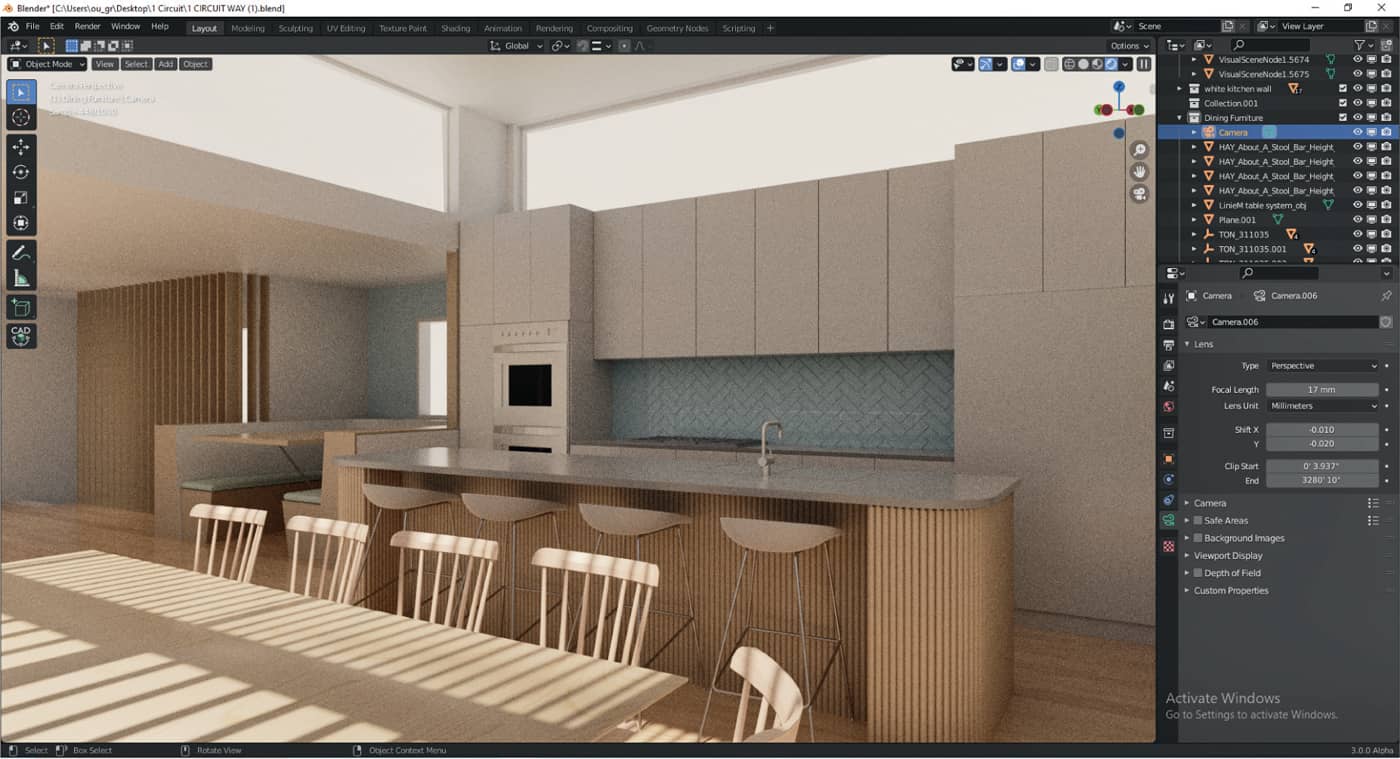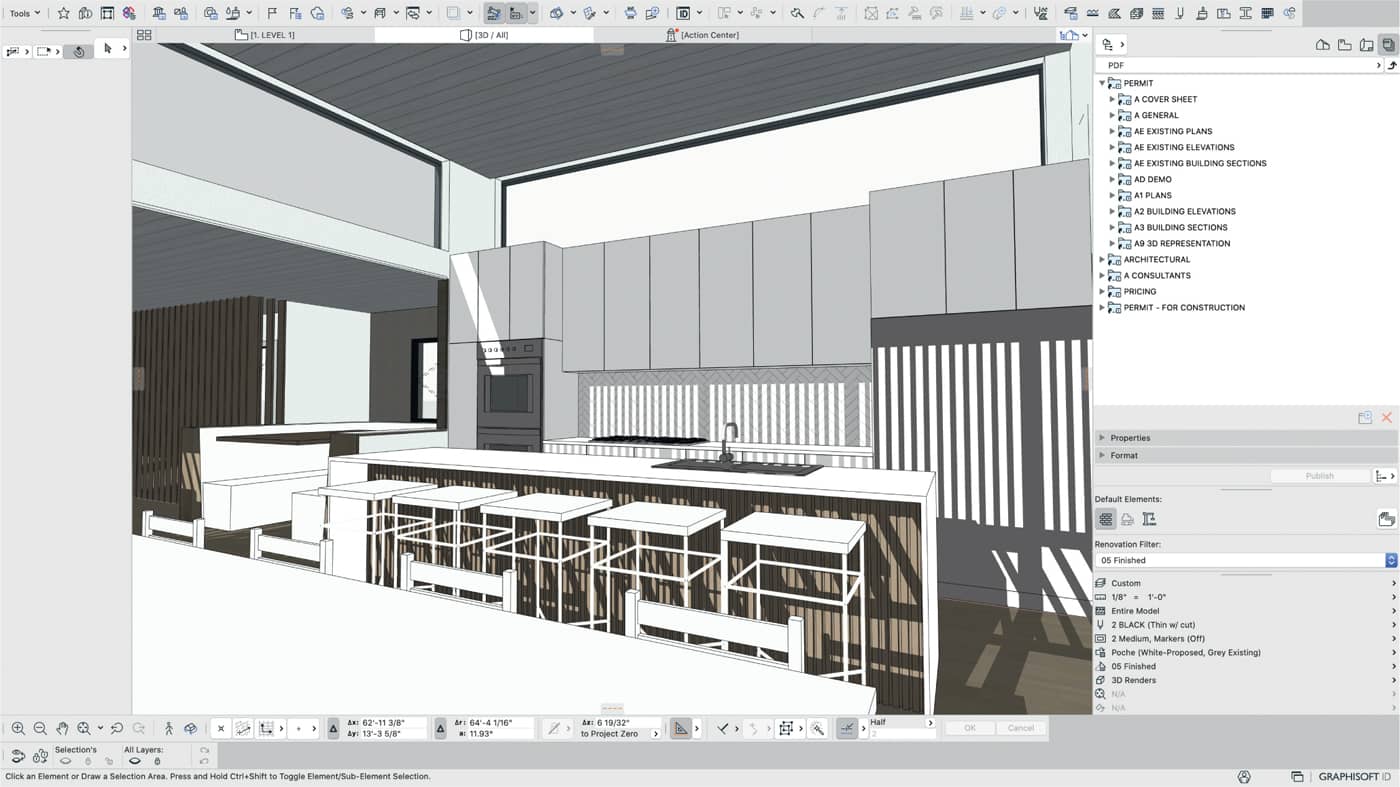56 Modeling
The use of computational tools to document and visualize an interior space.
Further Resources
Although the choice of tools to use for three-dimensional modeling is constantly evolving, the list below is a good start, but check the general websites for the most recent versions of software.
Render
D5 Render www.d5render.com
Twinmotion www.unrealengine.com
Maxwell Render maxwellrender.com
Arnold www.arnoldrenderer.com
Enscape enscape3d.com
Cycles www.blender.org
Model/Render
Blender www.blender.org
SketchUp Pro www.sketchup.com
3ds Max www.autodesk.com/products/3ds-max
Homestyler www.homestyler.com
Model/Render/Document
Archicad graphisoft.com
Vectorworks www.vectorworks.net
Revit and AutoCAD www.autodesk.com
Three-dimensional modeling and rendering is one of the most critical tools in a designer’s toolkit. The ability to easily and accurately dimension a space, and choose vantage points from which to view and make design decisions can ensure the success of a project.
Deciding on the appropriate software to invest in is a complex issue that designers will need to address. Some design programs offer an ease of use that might be beneficial in the early stages of a project. Others allow for the full integration of a building project, with the ability to create plans, sections, elevations, and complete three-dimensional representations. As with other types of software, a significant amount of time needs to be invested in order to develop the appropriate skills.
More recent developments in hardware enable projects to be represented in real time, giving designers the ability to make decisions about materials and lighting effects, as well as help with presentations to clients. In addition, the ability to render soft materials, access the extensive libraries of three-dimensional models from furniture manufacturers, and use sites that offer realistic images and descriptions of materials, vegetation, and other objects make the design decision-making process more effective.
By enabling precision in placement and visualization, a dimensionally accurate model can aid in the pricing and estimating of a project. More advanced tools can look at the effects of daylight and perform energy analysis. These advanced applications can help reduce the use of certain materials, and make the project more energy- and cost-efficient.

An example of a model that can evaluate the energy needs of a project via solar analysis.

Advanced renderings of interiors can be produced using open-source applications, such as Blender.

Building Information Models contain all of the information needed to document a project—plans, sections, material, and furniture schedules.
